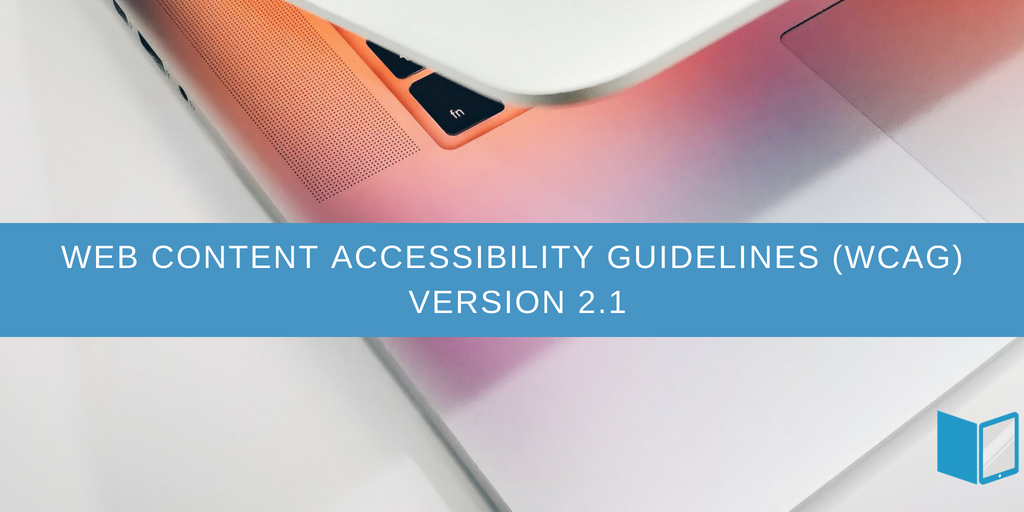Whenever website accessibility is discussed, mention of the WCAG is likely to follow close behind. Some ten years after it was restructured and re-released as the WCAG 2.0, a new version, 2.1, is about to be released. This is scheduled for this month, June, as we write this post and if nothing happens to delay it, and the writer of this had considerable involvement in the update. So it seems an appropriate time to consider the WCAG and look briefly at what the new version will bring.
The Web Content Accessibility Guidelines, or WCAG, are the international guidelines on how to make websites accessible to all people including, especially, people with all kinds of disabilities, from people with severe physical injury or impairment to blind people. It contains 61 "Success Criteria", as the individual standards are called.
We say "international" because the WCAG has been adopted by most civilized countries around the world. In many countries, it is the officially approved standard used in lawsuits over disability discrimination, as for instance in the UK, and in the US for websites covered by the Americans with Disabilities Act (ADA). Some countries have actually incorporated it, or references to it, in disability legislation. And, again in the US, the Section 508 regulations for government websites are aligned with the WCAG 2.0.
So if your company or institution has its website audited for accessibility, these are the standards that will be used. Your designers, developers, and testers should really all be thoroughly familiar with the WCAG. In practice, however, most companies have to rely on external consultants to audit their web estate and tell them what corrections are required.
The change
Given that most businesses are only just catching up with the current standard, 2.0, how will they be affected by the new version? Will their work to achieve 2.0 compliance be rendered out of date? Absolutely not! The W3C, who create the WCAG, decided right at the start that version 2.0 should remain exactly as it was, untouched. The new rules are added to the existing ones. So if you have just made your websites compliant, your hard work remains valid.
What is in 2.1?
The new 2.1 version adds extra Success Criteria. Version 2.0 had little to say about mobile devices, but today a half of all internet access is done from mobile phones and tablets. So several new Criteria cover mobile use. One example requires that web pages must be viewable with the mobile device held in both vertical and horizontal positions. Web developers must not (as some do currently) restrict it to use in just one orientation. This helps some people with physical disabilities who - as did Professor Stephen Hawking, for example - have their mobile device fixed in one position to their wheelchair.
More Criteria have been added to help people with cognitive impairment.
The remaining additions are for people with low vision. The current WCAG only requires content to be readable by users with poor eyesight using text sizes or zoom levels up to 200% of normal. But many people with serious vision problems will use text and zoom settings up to the maximum available, 400 or even 500% depending on the browser. So one
Should you upgrade your website to take account of these added standards? If your IT team start using them in any new development, your company can get one step ahead of whatever legal pressures may arise later in your country.
US and Europe
IT workers in the US might be thinking that since Section 508 has only just (in 2017) done the "Refresh" as it was termed to bring government standards into line with the WCAG 2.0, they might like a breathing space before looking to move beyond that. In Europe, however, they are playing a whole different game. The EU has been waiting impatiently for the new release. Their "aim is to fully
So, if you have yet to meet WCAG 2.0 standards, move now to catch up because the goal posts are moving. But for those who already have 2.0 compliance, why not arrange for your IT departments to start taking 2.1 requirements on board now. Everyone will benefit, especially your customers!
Our authoring platform, MyEcontentFactory makes it very easy for instructional designers, professors, and teachers to create meaningful lessons and courseware with the technology. Why not take a look?
More than 20 educational companies and publishers are using MEF software already, including Cengage Learning.






Leave a comment